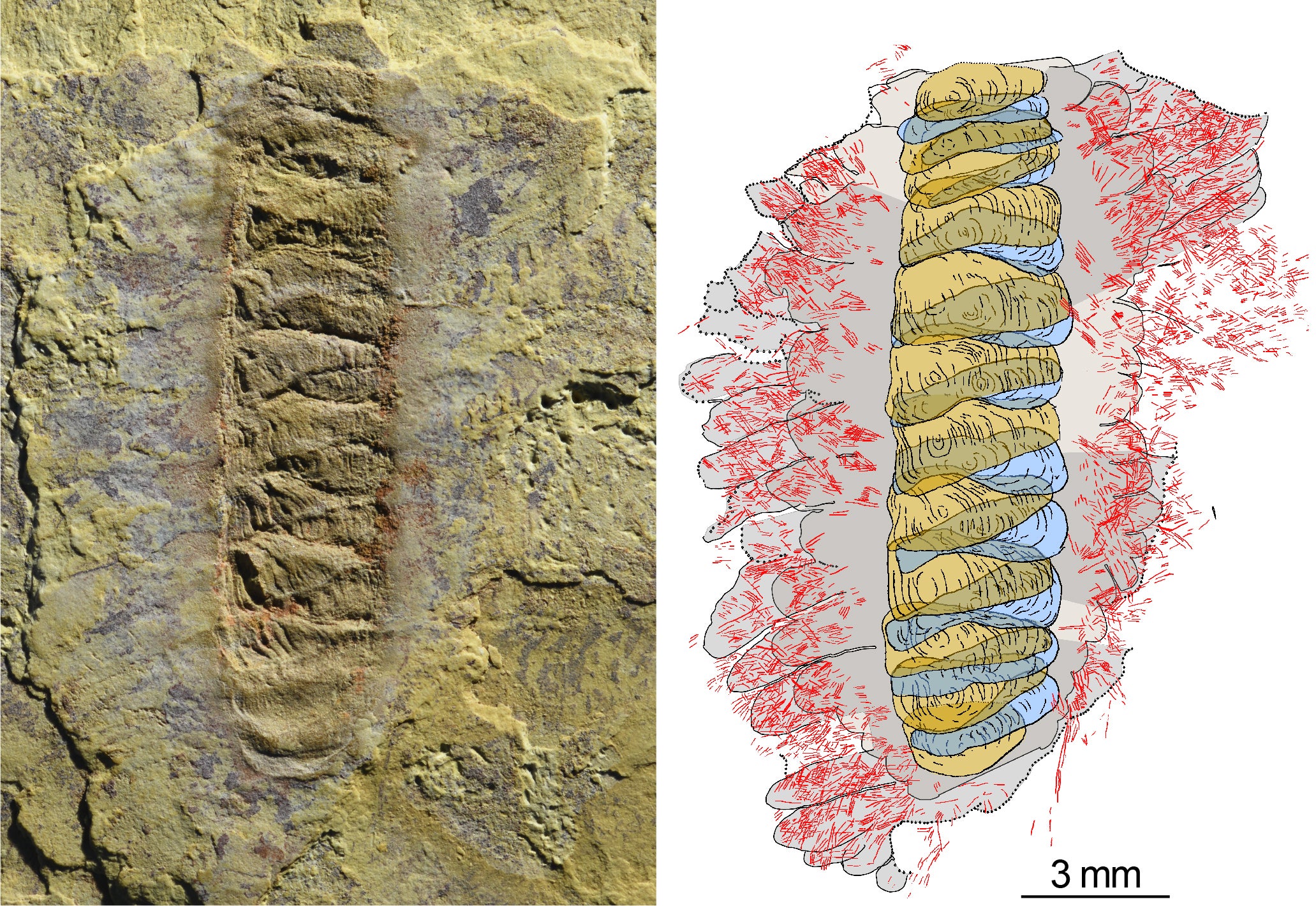Paleontologists have discovered a bizarre worm-like creature from the Cambrian Period that has features associated with three groups of living animals. Just a half-inch long and covered in bristles, the armoured Wufengella is providing clues as to how ancient filter-feeders evolved.
Wufengella is about 518 million years old, timing it toward the tail-end of the Cambrian explosion. The Cambrian explosion was a period of remarkable evolutionary diversification in animal life. Life on the seafloor particularly flourished: tank-like filter-feeders evolved to inhale jetsam, and sharp-toothed penis worms (they’re actually called that) learned to seek shelter in vacant seafloor shells.
Wufengella is evidence of those heady times. Its unique morphology — from its asymmetric skeleton and bristles to its flattened lobes — links the animal to three groups of modern life: brachiopods (which look a lot like clams), bryozoans (also known as moss animals), and phoronids (horseshoe worms). An analysis of the worm-like fossil is published today in Current Biology.
“This is an animal we have hoped to find a fossil of for decades,” Jakob Vinther, a paleontologist at the University of Bristol and co-author of the paper, wrote in an email to Gizmodo. “It is truly an anatomical space cadet. It looks like a bastard love-child between a bobbit worm and a gumboot chiton.”
The animal, whose shorthand name means dancing phoenix, was discovered in 2019 and excavated from a hill in China’s Yunnan Province. The fossil’s exceptional preservation means that details of its soft tissues are preserved alongside its hard skeleton.

Vinther (who often works on soft tissues and was a member of the team that identified a dinosaur’s cloaca last year) said that Wufengella’s morphology confirms that animals like it had rows of plates on their backs, but it also connects the three extant groups of filter-feeders.
However, Wufengella isn’t a brachiopod, a bryozoan, or a phoronid. All these animals had lophophores, a horseshoe-shaped organ crucial for filtering water. The petite Wufengella is (brace yourself) a camenellan tommotiid, the former meaning it had a series of bristles along its body and the latter meaning it is evolutionarily connected to brachiopods and bryozoans.
“The fossil isn’t a direct ancestor but more like their ancient cousin,” said Luke Parry, a paleontologist at the University of Oxford and a co-author of the research, in an email. “It tells us what features were present in the ancestor of lophophorates, in the same way that Archaeopteryx tells us where birds came from.”
Since modern-day lophophorates are affixed to the seafloor, Wufengella shows that the animal group evolved from a mobile organism. But Parry adds that the animal also has a more complex morphology than its living cousins — as the animals took up a sedentary existence, they no longer needed bodies built for movement.
Because the Cambrian explosion saw so much diversification in so short a time, it can be difficult for paleontologists to know how animals evolved from each other, and what their common ancestors may have looked like.
Wufengella provides answers for animals with lophophores. And though its kind is no longer around, the descendants of its cousins are. Under the sea, relics of the Cambrian are still filter-feeding their way through life.
More: Scientists Find Huge Trove of Marine Fossils from the ‘Cambrian Explosion’ in China
